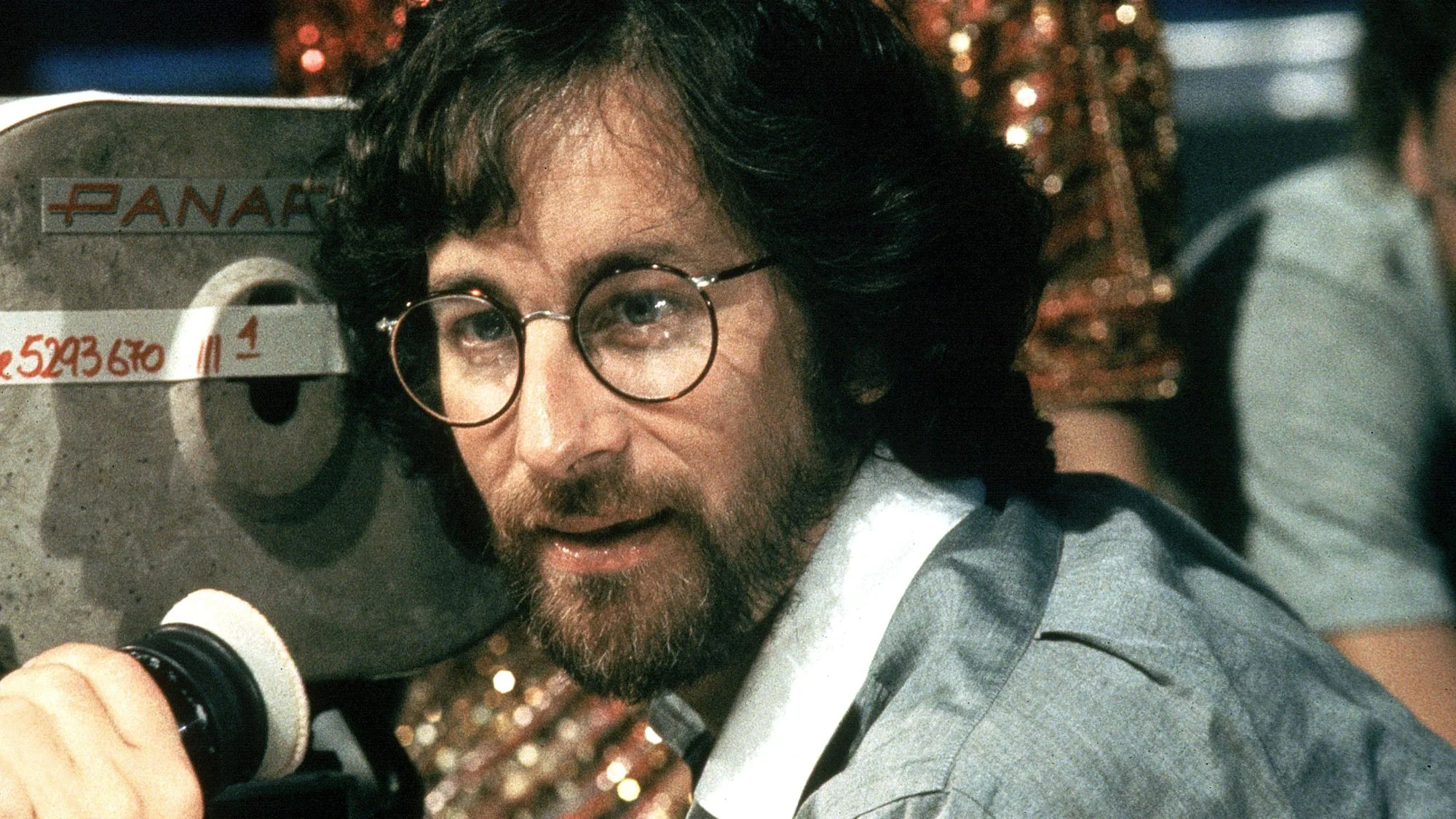Two Parents of Almost All Cinema To Follow: Fritz Lang AND F. W. Murnau by Craig Hammill
I’ve had a theory for a long time that German expressionist filmmaker F.W. Murnau (Nosferatu, The Last Laugh, Sunrise) is the Ur-ancestor for a whole lineage of a certain kind of filmmaking.
To get right to the heart of it, Murnau’s Sunrise (1927), his first American movie, had such a profound impact on moviemaker John Ford that it changed Ford’s approach to filmmaking forever. The Ford style (a kind of deep humanism married to spontaneity married to a deep focus German expressionist approach to camera angle and production design) inspired Orson Welles, Akira Kurosawa, Satyajit Ray, Ingmar Bergman, and Federico Fellini among others.
Ford, Welles, Kurosawa, Bergman, Fellini would go on to influence Steven Spielberg and Martin Scorsese and countless others.
So in a sense, one can trace a kind of cinematic river from Murnau to the present day.
What I didn’t realize is that there is another parent-just as influential-who has inspired a decidedly different yet equally important cinematic lineage: German expressionist filmmaker Fritz Lang (Mabuse the Gambler, Destiny, Metropolis, M, The Big Heat).
Like the two sons of the biblical Abraham-Ishmael (who would become the ur-ancestor of Islam) and Isaac (who would become the ur-ancestor of Judaism), Lang and Murnau have influenced two related yet distinct approaches to cinema.
Whereas Murnau came from the theater, Lang was, in many ways, one of the original children of cinema itself. Lang would go to see 2-3 movies a day with his friends in his native Austria, enchanted by the new art forms’ seductive power. Soon Lang was writing scenarios and then directing.
Whereas Murnau was using theatrical training to discover cinematic solutions to storytelling, Lang was really starting with the technology of cinema itself as a means to figure out how to tell the story.
Lang’s lineage is telling in this way. Filmmaker Alfred Hitchcock, who worked in Germany in the 1920’s and got to see the works of both moviemakers, was deeply impressed by Lang’s silent work and control of his craft. Hitchcock in turn has had a profound influence on Brian De Palma and David Fincher. These moviemakers are often obsessively involved and interrogating how the technology itself (the camera, production design, editing, mise en scene) can tell the story.
Now there are several moviemakers who bear the imprint of both Lang and Murnau: Spielberg is the quickest to jump to mind in that you can see the deep influence of both John Ford and Alfred Hitchcock in Spielberg’s cinema.
But Spielberg has always been (sometimes out of necessity) jazzier than a filmmaker like Fincher. Fincher is a kind of Beethoven. Spielberg a Mozart.
This idea (I won’t get full of myself and deludedly call it a “realization”) really intrigues me as it helps me to delineate two approaches to moviemaking.
The Lang-Hitchcock-Fincher approach might be summarized as being compromised of tremendous preparation in pre-production of the script, storyboards, pre-visualization, testing. The result is often an overpowering work of cinema where every aspect of cinema is clearly in the control of a near obsessive master.
While this approach can sometimes be too controlled, at its best, it produces pinnacles of the art like Lang’s M, Hitchcock’s Rear Window, and Fincher’s Zodiac. These movies are so brilliant in their construction, so stunning in their genius execution as to humble the rest of us.
The Murnau-Ford-Kurosawa-Spielberg approach might be summarized as also being comprised of tremendous preparation in pre-production, specifically on the script and the approach, but for allowing more collaboration and on-the-spot improvisation during production. This can sometimes result in works that feel a bit too improvisatory or off the cuff (specifically in the canons of Ford and Spielberg) but at its best it produces deeply cinematic humanistic masterpieces like Sunrise, Stagecoach, The Searchers, Seven Samurai, Jaws, Raiders of the Lost Ark, E.T. etc.
Kurosawa is an interesting wrinkle in this theory in the sense that he never really ever made a bad movie (maybe the only moviemaker of any moviemaker to really be able to lay claim to this feat). But he did allow for much more improvisation than some might realize. Kurosawa liked to call such improvisation “kiln changes” in a reference to what happens in ceramic when elements accidentally land on the glazed pots before they are fired in the kiln. The result can sometimes be surprising unexpected beauty. Kurosawa liked to stay open to such kiln changes.
His approach of shooting key scenes with 3-10 cameras (really developed during Seven Samurai and used to startling effect in the first half of High and Low) allowed the actors to play a scene or sequence uninterrupted. Though Kurosawa rigorously designed and planned the placement/movement of the cameras (he was a painter originally after all), he would often edit the resultant footage in a way nobody could have predicted.
In other words, Kurosawa left room for jazz in the editing.
Each of these approaches have their fascinating pros and cons, even in the masterworks.
The Lang-Hitchcock-Fincher approach often comes to feel clinical. This isn’t necessarily a bad thing. In fact, it is exactly this clinical remove and obsessiveness that give works like M, Vertigo, and Zodiac their unsettling power. But it can also make fascinating if flawed works like Metropolis, The Wrong Man, or Mank feel a bit chilly or mechanical.
The Murnau-Ford-Kurosawa-Spielberg approach often comes to feel deeply warm and humanistic but can, in its worst excesses, veer to sentimentality. At its best, it imbues works like Sunrise, Stagecoach, Ikiru, and Catch Me If You Can with a deep emotion and love for humanity and human striving. In excess, it can color wonderful if imperfect works like Tobacco Road, Dodeskaden, Empire of the Sun with a jerky-jerky sense of whiplash in tone and a kind of idealist’s inability to fully express something with ironic remove.
In fact, one might say that Lang-Hitchcock-Fincher are often masters of irony because of their impish sense of humor and clinical sense of remove. But you’d probably not hire any of them to direct a romantic comedy.
Murnau-Ford-Kurosawa-Spielberg are your masters for engaged, committed, passionate works that affirm the worth of existence but they are not necessarily the best at satire or dark dark comedy.
Murnau breaks this mold however as his Germanic European sensibility DEFINITELY imbued masterworks like Faust and The Last Laugh with deep irony and sometimes scathing comedy of society. Nevertheless, Murnau’s humanism often trumps his clinicalism. Its often funny to note that he couldn’t bear to leave his main character of the disgraced doorman turned bathroom attendant in the bathroom in The Last Laugh. He used one of his only titlecards to tell his audience he had to give that character a happy ending and so we end up with the exiled old man suddenly restored to prosperity through a Deux-ex-machina inheritance.
Lang-Hitchcock-Fincher probably would have let the old man die in the corner of the bathroom.
But even here, I hesitate. Hitchcock, though a clear OCD obsessive when it comes to style, was often a tortured Catholic when it comes to content.
And so the rivers converge and cross and coalesce in countless curious curliques.
It’s fun to play this game a bit by throwing out the name of a director and seeing where she or he might slot.
Kubrick? For sure Lang-Hitchcock-Fincher. And yet Kubrick notoriously improvised, rewrote scenes the day of shooting, changed his ideas. . .
Renoir? For sure Murnau-Ford-Kurosawa-Spielberg. Yet Renoir loved the technology and experimented with it his entire career. Even shooting a late period Dr. Jekyl and Mr. Hyde adaptation called Le Testament du docteur Cordelier (1959) with multiple cameras to experiment with the emerging TV style of the time.
Coen Brothers? Lang-Hitchcock-Fincher in their approach to style but sometimes Murnau-Ford-Kurosawa-Spielberg in their warmer comedies in terms of their humanism and love of idiosyncrasy. . .
So the variations are endless and beautiful and all this may not amount to very much anyway.
But it is fascinating to me to realize just HOW influential German Expressionism has been to all cinema that followed it.
And I’m curious to see who the great-great-great-grandchildren of these old masters will be. And how they’ll twist and turn the style to new exciting ends.
Craig Hammill is the founder.programmer of Secret Movie Club.



